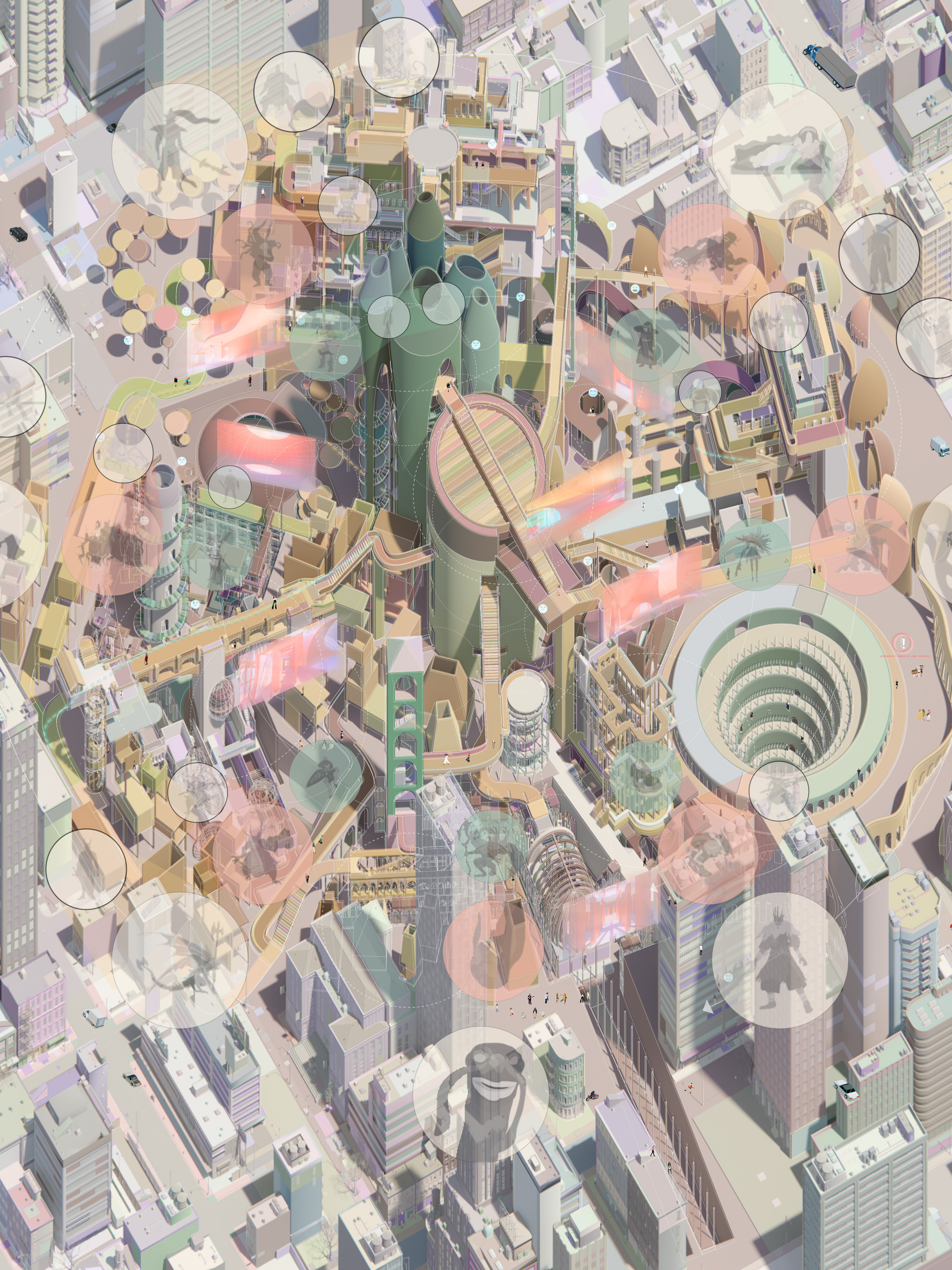Partnered with Jun Hu & Shujie Liu, 4 Weeks Project 2022
The megastructure is more than the building itself, as its network stretches farm across the city, even the nation. In our imaginated future, presented in the axono drawing of Seattle. Amazon’s future patents dictates the lifestyle of citizens, where everything is evaluated: Amazon Priceifies Human Behavior, Emotions, and Even Social Relationships.
These program of space then put into a sequence of viewing order that we designed for the users. The users would enter from the warehouse, then to amazon go and farm, then amazon books and offices, and lastly the data center. The sequence is transformed into serial connect space syntax, which they would ascend, descend, jump cuts, loopback.
The whole navigating experience inside the space is theatrical, as the staging is what the amazon patent could be and how the facility works. The user traversing within the megastructure in a wandering manner, having the freedom choose what to watch.
As we developed, we are able to generated 4 main sectors of spaces, and each of them have 2 division.
Regarding the privacy under surveillance, as we move towards a more technologically advanced future, perhaps information surveillance is an unavoidable fact, but we cannot completely give up our insistence on privacy cognition. This is also why we envisioned our design can evokes our collective recognition with performative spatial designs.
We identity each patent’s characteristics, technologies, interaction with human, to determine their usages and purpose. Then categorizing them into program of spaces that would they would fit in. Then we determine the space that would needed to run these facilities. Patents translated into types of spaces, that combines into a bigger structure.
We took the first Amazon Go store that opens on February 25, 2020, in Seattle as the case study, which is closely next to the Amazon HQ and sphere. We’ve conducted a study about the process of data surveillance based on collective data of amazon go buying experience, condensed them and re-represented it in a fictional persona to narrate this story.
The moment that he picks up an item from the rack, weight detectors, cameras, captures biometric data from him, and sending it back to data center to process it. As Jerry exits the store and complete his trip in amazon go, the moment that he got the receipt from the app is already the moment where his information got store and analysis by amazon’s Deep learning algorithm.









